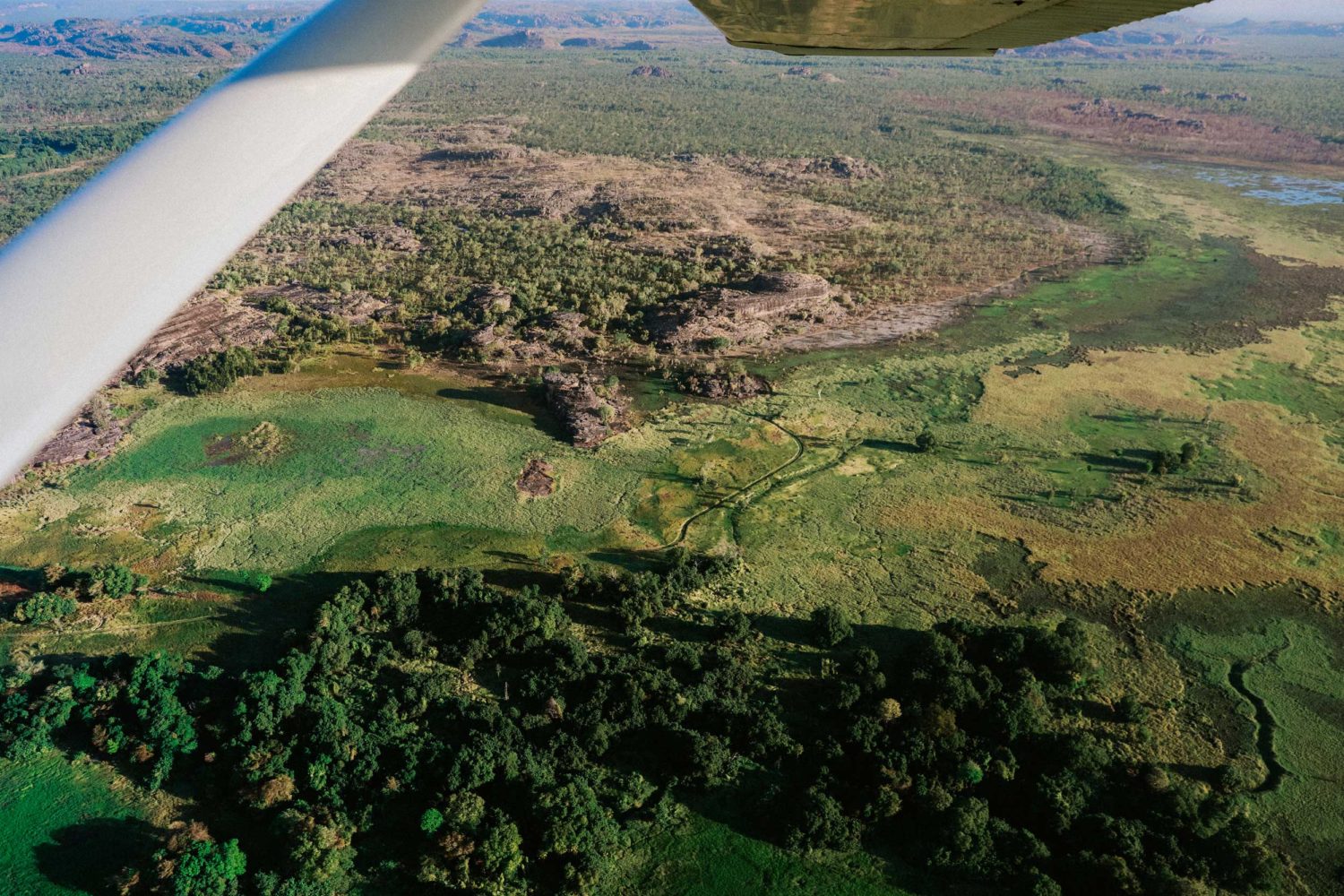Above and Beyond the Sacred Sites of the Northern Territory
We rise up in a Cessna over the Wetlands of Australia’s largest National Park. My stomach lurches as I look down on an incredible variety of landscapes — coastal swamps, floodplains, lowland hills, escarpments, monsoon rain forest, and ancient plateaus.
Beneath me, crocodiles scuttle into the East Alligator River, and a fabulously diverse range of birds navigate their way over the plains. I look in every direction and see nothing on the horizon. From up here in the sky, I have a glimpse of the immensity of Kakadu’s wilderness: the whole Park is a protected area of nearly 20,000 square kilometres which is half the size of Switzerland.
I take off the headphones, step out of the Cessna and head back to the red-dirt tracks of Kakadu’s wild outback. I am in the very North of Australia’s remote Northern Territory — in the central north of the country, between Western Australia and Queensland. The Northern Territory is the third-largest Australian federal division and yet the least populated, with the country’s highest proportion of Aboriginal people (30 per cent of the population). Traveling across The Top End (as some like to call this part of Australia) is an extreme experience, affording a perspective like nothing else on earth.
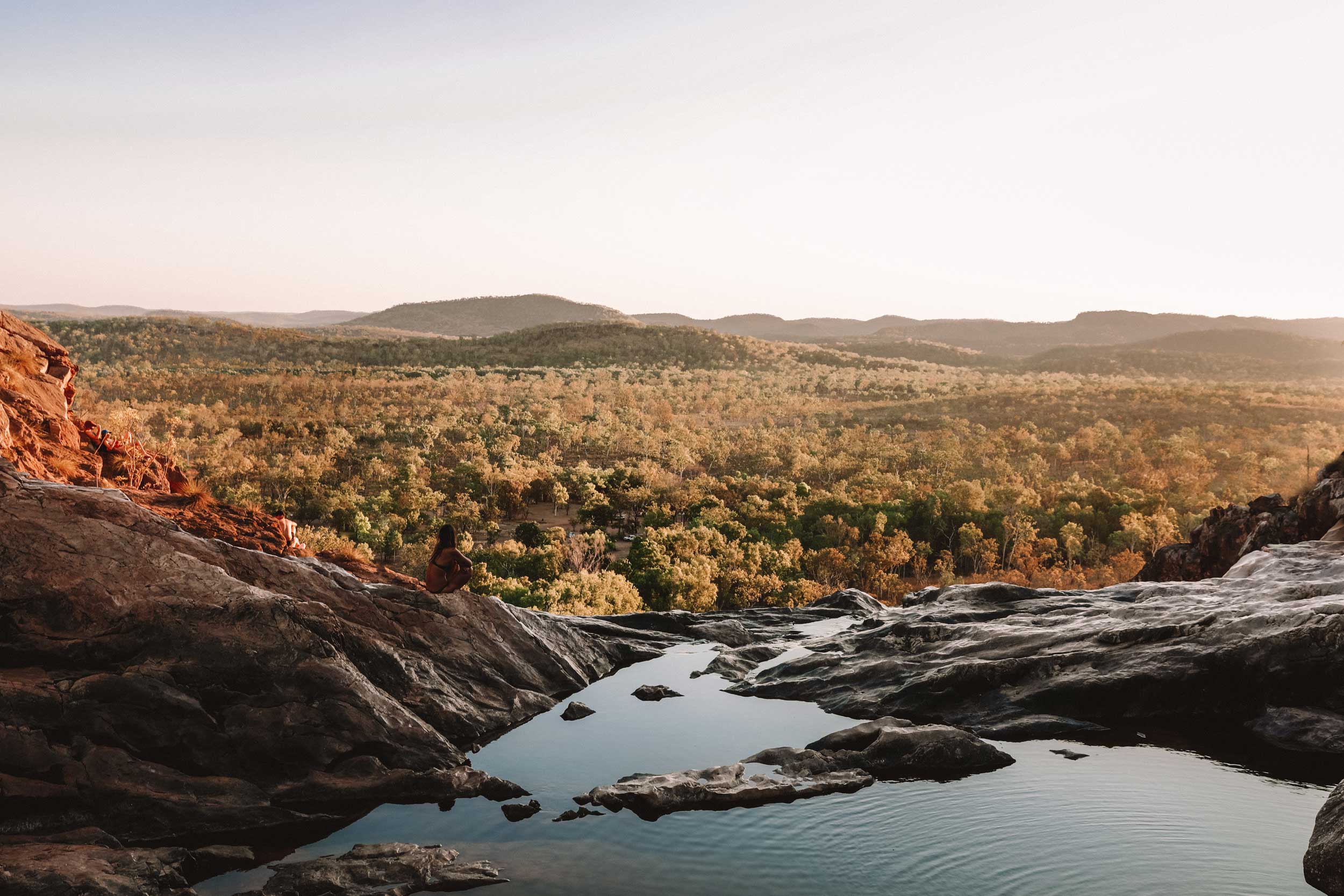
Driving 200 kilometres from Darwin, in a four-wheel-drive vehicle, and camping along the way on top of our car, is how we go deep into the vastness and varied ecosystems of this remote outback. Unlike many national parks, Kakadu may lack a stand-out attraction but it’s mesmerizing throughout. Journeying here is about cruising its savannah, wetlands, and escarpments filled with abundant wildlife and surrounded by stark sandstone cliffs. The extremity of the weather makes Kakadu an unusual ecosystem; it’s one of the few areas in the world where pockets of monsoon rain forest coexist with desert plants. We drive through the old Jim Jim Road and hike up to Gunlom Falls, from where I enjoy what has to be the closest-to-God infinity pool here on earth. There are magical views to the southern-most parts of Kakadu National Park, and it’s beautiful at sunset or sunrise. We continue the road trip towards the Twin Falls, an extraordinary gorge on the South Alligator River. It’s mid-August — the dry season — which means there is little water coming out of the falls, but we hike up to the pools in the early morning and are fortunate to have this remarkable site to ourselves.

But all of this is just the beginning. Along with its dramatic views, at more than 60,000 years old, this is also one of the world’s longest-surviving cultural landscapes. There is a shift in the scenery as we head further east on the Arnhem Highway. We observe the wetlands, floodplains and savannah woodlands which then hand over the baton to the “stone country”, and area so alien that it forces me to reconsider how the world works. Some of Australia’s most important indigenous artwork on rocks and caves – dating back 25,000 years – have been found and preserved within this part of Kakadu National Park. This is precisely why Kakadu has been on the UNESCO World Heritage-list since 1981.
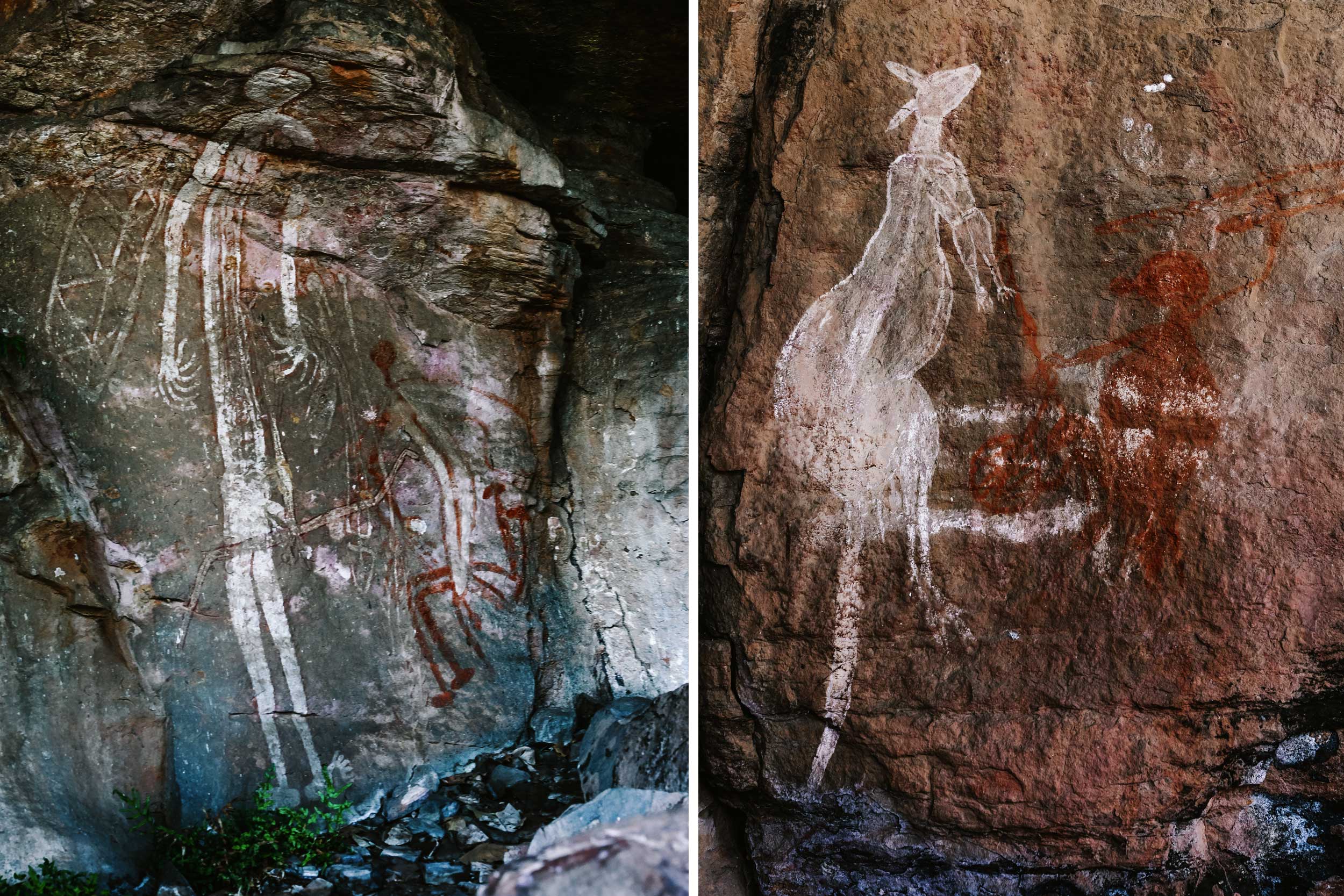
“I know Kakadu is a rough destination, but coming here is the only way for you to understand how old our art is,” says the park ranger, as we walk along the ancient rock art of the Anbangbang Shelter at Nourlangie, set in red rock cliffs, on a sunshiny morning. Next to it is the Anbangbang Gallery, also one of the most famous rock art sites in the world, featuring vivid Dreaming characters repainted in the 1960s. “The Gagadju – Kakadu’s indigenous community – have no written language, so these paintings are their history books that have endured through all these years,” highlights the ranger. “Australian Indigenous art is the oldest unbroken tradition of art in the world. It is so old, in fact, that examples have been found that depict long-extinct megafauna.” Putting things into perspective: aboriginal ancestors started painting on these rocks thousands of years before the Pyramids of Giza were built or Olympians competed on the tracks of ancient Greece.
Alas, there is a strong fear this ancient rock art won’t last forever. Throughout Australia, there are more than 100,000 recorded rock art sites, but experts say half of them could disappear within coming decades, including those of Kakadu. Changes in the microclimate around the rock art sites, pollution, bushfires, mining, and animals are among threats to the art found in rock shelters, often in remote areas. Archeologists in Australia report that a few rock art sites have already disappeared, and others have had paintings carved out. “Our ancient rock art is at serious risk,” says an aboriginal guide we come across in Kakadu. “I believe there is insufficient legal protection in place addressing the issue, but I hope it will change soon. It’s our culture. We don’t want to see it die.” Back in the day, aboriginal ancestors often re-grooved their rock engravings which has helped them survive for the thousands of years that they have. Today re-grooving is rare as many traditional owners of the rock engravings have passed away, and no-one has the authority to renew them.
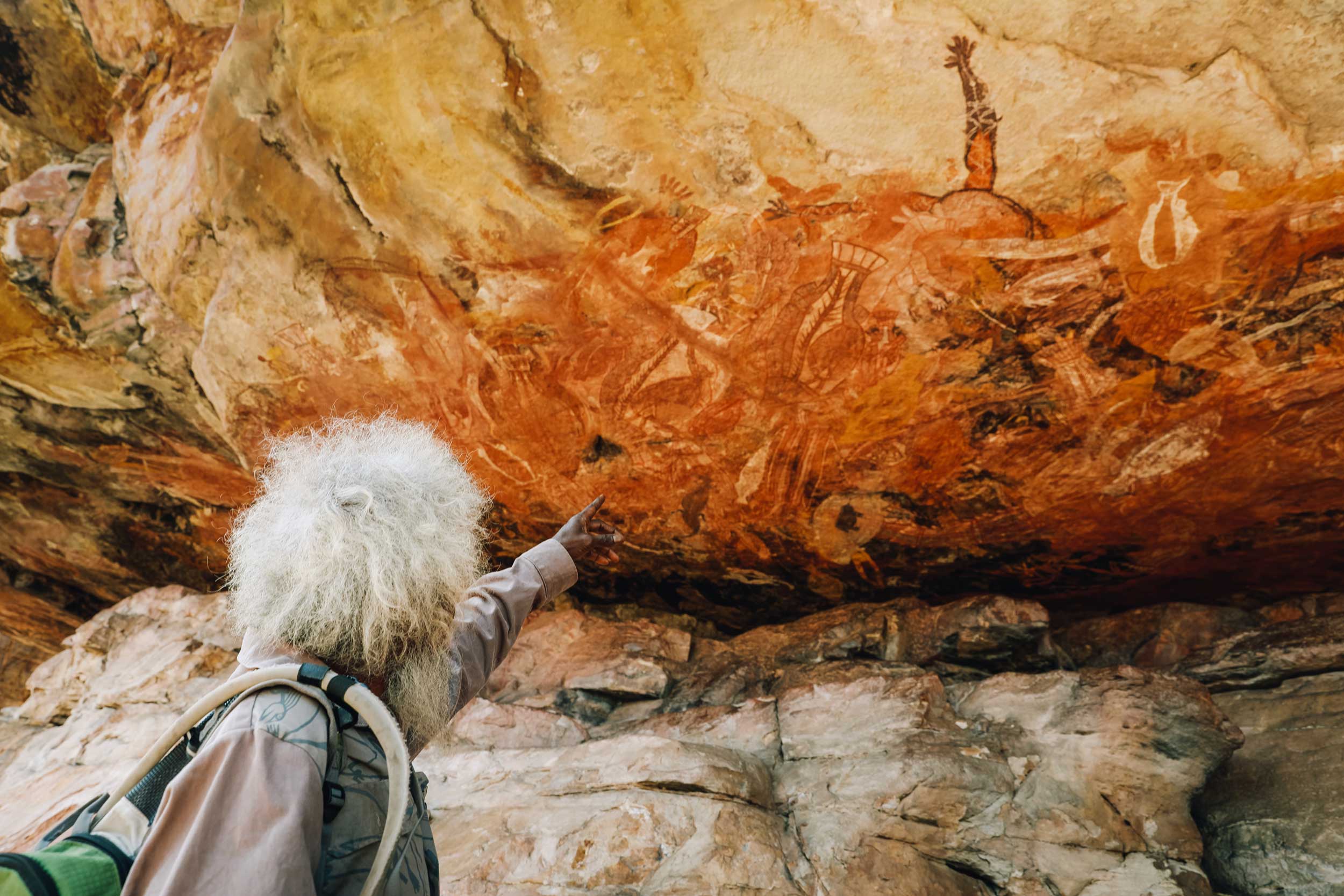
In spite of everything I have read, nothing can prepare me for the moment I am standing at the Nardab Lookout during sunset, looking out at the view over the lush floodplain of the East Alligator River. I am in Ubirr, a sensational rock art site 39 kilometres north of Arnhem Highway; tales of Aboriginal legends fill the air as I navigate across layers of rock art paintings, in various styles and from various centuries. Here I sense the beating spiritual heart of Australia, of an Aboriginal community with stories to tell — and more than a few crocodiles. “Take your shoes off to feel this place,” recommends the park ranger. Ubirr offers an insight into a past civilisation in an environment far removed from modern day society and opens my eyes to a raw Australia. “This is the traditional land of Bininj — in the north of Kakadu — and Mungguy — in the south — whose presence brings soul and spirituality to the experience of visiting here,” points out the ranger.” There are more than 5000 recorded art sites in Kakadu, but most of them are still off-limits for visitors”, he says. “Thousands of years ago food was abundant here, so the Aboriginals had enough time to dedicate to art.”
The next day, Max, my better half and photographer, and I cross the Alligator River into Arnhem Land. This is 100 per cent Aboriginal land, and a permit is required to enter the area. It’s sparsely populated, with about 16,000 people living in an area the size of Portugal and, for most of the year, it’s inaccessible by road. We visit Injalak Arts, a non-profit community where indigenous painters, wood carvers and weavers create and sell their works, before we head off to explore the Injalak Hill guided by an Aboriginal artist. We hike up the hills under extensive shelters featuring layered paintings created over thousands of years. “Mimi spirit lives in the stone country, and they often come out at night,” says our guide. “They painted the arts on the roof of these rocks.” Injalak is the most impressive rock art site I’ve been to; the art is everywhere, in every corner. It reminds me that rock art proves 60,000 years of continuous human habitation and provides a valuable link to thousands of years of history. And it’s right here in front of my eyes, in situ and very much alive, rather than in a museum.
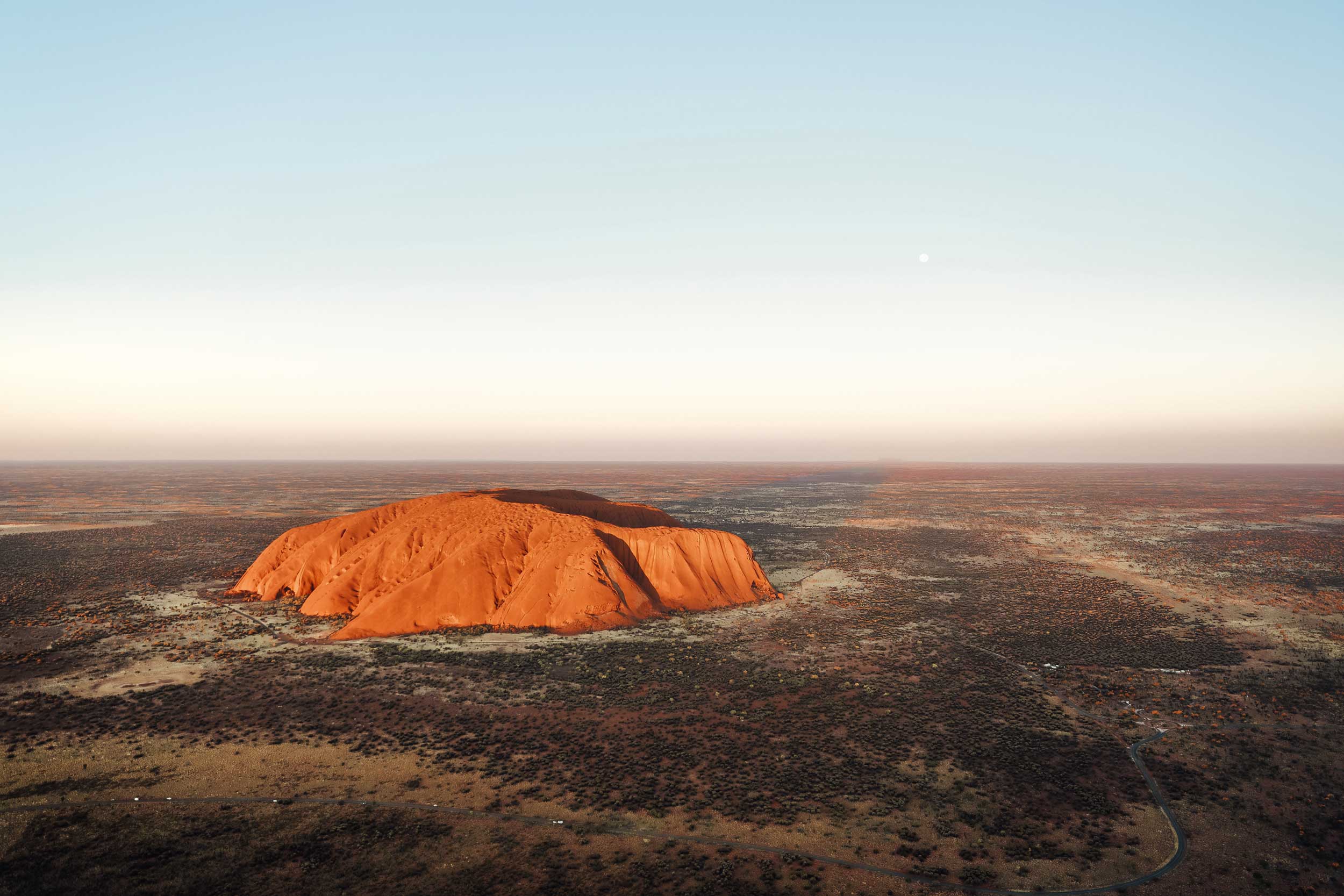
I have a similar feeling when I fly to the heart of the Territory to see a giant rock rising improbably from the desert of Uluṟu-Kata Tjuṯa National Park. “Uluru is much more than a rock, but a collection of different sites related to the journeys of the ancestors,” explains our guide from Longitude 131 — the superb hotel where we stay. I am fortunate to witness Uluru, a Unesco World Heritage site, and Kata Tjuta from different perspectives; I hike the surroundings during sunrise and I take a helicopter flight at sunset. It’s immediately clear to me why these massive rocks hold such profound significance to the Pitjantjatjara Anangu, the Aboriginal people of the area. As the light hits the rocks, they glow in different hues, from deep ochre to bright orange. This is a site like nowhere else on earth and it is not until I am actually here that I can begin to understand it. It provides a strange, disturbing allure.
In Uluṟu-Kata Tjuṯa National Park, it’s hard to escape the feeling that “here lies eternity”. This same feeling applies to other sites of the Northern Territory that I’ve visited. There is nothing more electrifying than this mysterious, mythic call of the outback.
